This post may contain affiliate links. Please read our disclosure policy.
Having trouble with your sourdough bread? These Sourdough FAQs will help you troubleshoot problems and get back on the road to yummy bread!
Sourdough bread CAN be complicated, but it doesn’t have to be. Read on to learn how to fix any problem you might encounter!
Table of Contents
Sourdough Bread FAQ

If you know me, you know I’m a major sourdough bread fan and am constantly nursing a sourdough starter so that I’m always prepped to make my favorite sourdough goodies. If you haven’t yet, check out my sourdough starter tutorial (with a video!) and my favorite go-to sourdough bread recipe. Because there are so many different variables in making sourdough bread, you may encounter a problem or two along the way. Keep reading to learn how to troubleshoot and fix whatever’s ailing your bread-making process!
🍞 18 Easy Sourdough Recipes!
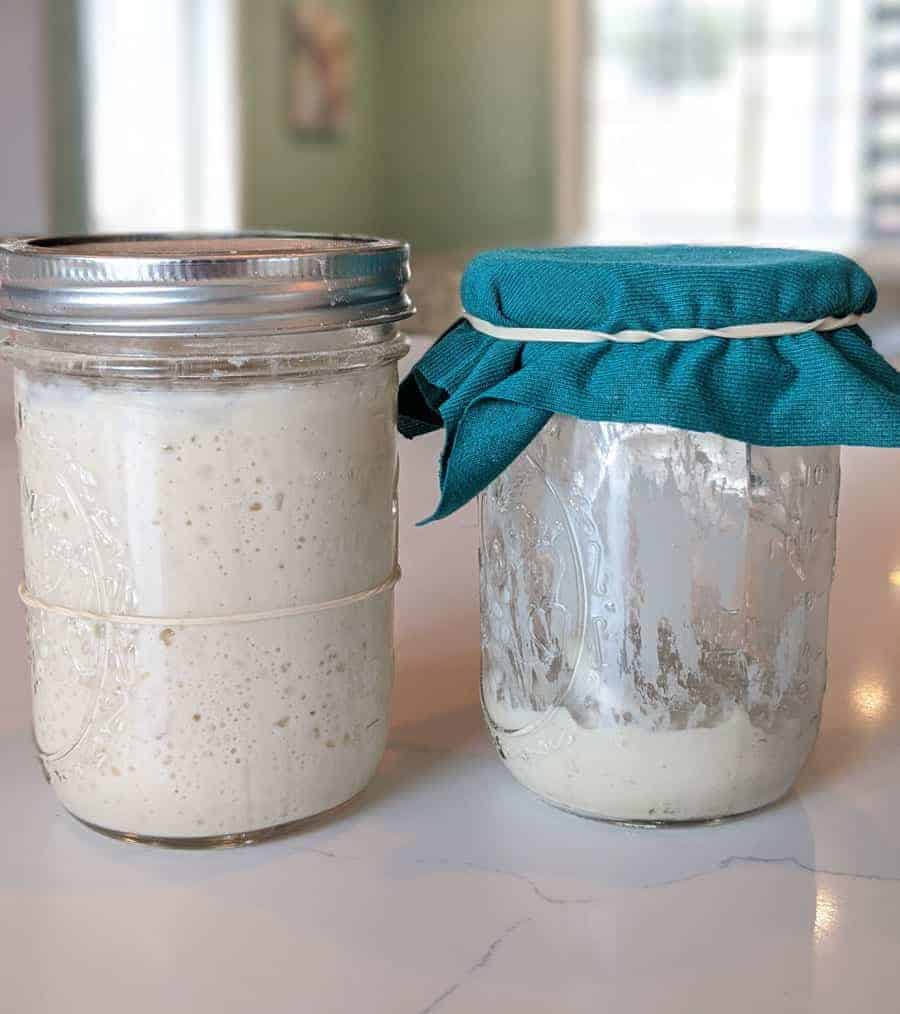
If you get to day 7 in a homemade starter, OR if you’ve been given a mature starter and it’s not rising after 2 days of consistent feeding, you need to change something. You’ll want to adjust something and see if it helps — like moving to bottled water, moving to organic flour, or warming up the area your starter is in. I’d choose one of these three things to do first and try it for 2 days.
If nothing changes, keep doing it (if you moved to organic flour, keep with organic flour), and then change another thing (increase the warmth). Watch the starter for another 1 to 2 days. By making smart choices about what to change, you’ll be able to know what wasn’t working in the first place. Changing up one of those three things will solve the issue of the starter not rising in almost all cases.
To use your starter out of the fridge, simply remove it from the fridge, discard everything but 25 grams and feed that reserved 25 grams, 50 grams of flour and 50 grams of water . Stir it up well. Let it get bubbly, and then you are ready to use it. I normally pull mine out and feed in the late morning or at lunch to prepare it to make a batch of bread dough that evening (the dough will rest overnight and be baked the next day).
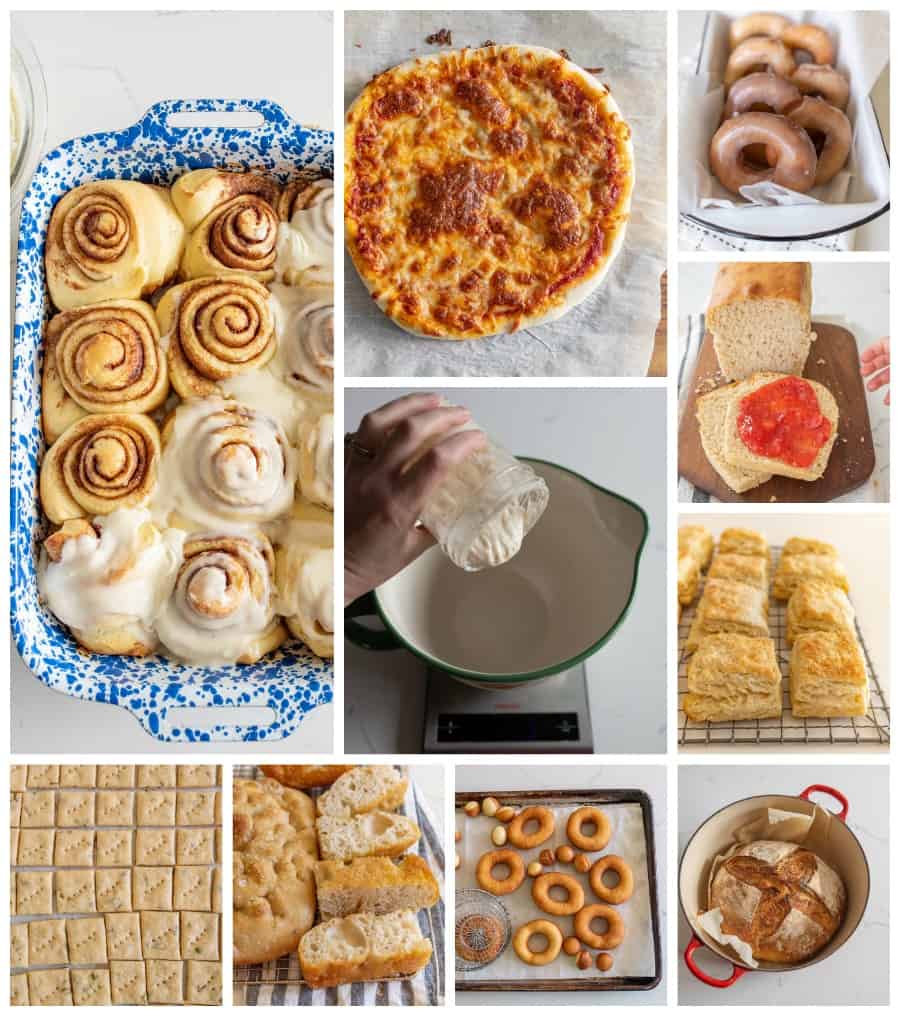
Easy — simply feed it more! When you are getting it ready for baking, if you’d like to bake more than one loaf or make a recipe that uses more than 50 to 70 grams of starter, just feed it double: 100g of both water and flour. If you need even more than that, when the starter has peaked, feed it again. Repeat until you have the amount of starter that you need.
Sometimes when I know I want to make lots of dough in the evening, I’ll feed my starter 100 grams of both water and flour in the morning, and then at lunch or early afternoon, I’ll feed it an additional 200 grams of both water and flour without discarding anything. Then by late evening (I typically make my bread dough around 9pm after I get the kids in bed), I’ll have lots of active starter to work with.
Here’s some more information. It’s great to know the weight of the jars you are using. I use a wide-mouth pint jar and a wide-mouth quart jar most often. I weighed them both, separately and empty. Then I wrote down those weights in grams on a little piece of tape and stuck it to the cover of my scale. Now when I am baking, I get set my jar with the remaining sourdough starter in it and I can do a little math. The weight minus the original weight of the jar is the amount of the starter that I have left in the jar. And now I can feed it accordingly.
I like to keep a 1:2:2 starter to flour to water ratio. The key is to keep the water and the flour at the same equal ratio (this is considered a 100% hydration starter and the kind of starter most recipes, including all on my blog, have been developed with). You can play with the amount of starter you keep, though. Know that by keeping less starter, it’ll generally take the starter longer to peak and eat the food the flour and water provide.
I have a friend who keeps a 1:5:5 ratio. She keeps 5 grams of starter and feeds it 25 grams of flour and water. I thought this was great information to know because occasionally I’ll use more starter for a recipe than planned and I don’t have as much left as normal. Instead of feeling like I ruined my life and used all my starter on accident, I diligently scrape the jar out, collect my 5 to 10 grams of starter, and just don’t feed it a lot (only 25 grams of flour and water). It’ll take it a full 24 hours to peak, and instead of discarding anything for the next feeding, I’ll go back to my 50 grams of flour and water feeding. It’ll be built back up to where I normally keep it!
The opposite works, too. When I’m in a hurry to grow more starter, I won’t discard, and I’ll keep a greater amount of starter. This means it’ll eat more quickly, and I’ll have a risen active starter fast. I’ll keep a 1:1:1 ratio if I want it to peak faster. I’ll feed 50 grams of starter 50 grams of flour and water, and it’ll generally rise and peak about 50% faster than my 1:2:2 ratio. These are little tricks to help you understand your starter and to help it work for your schedule.
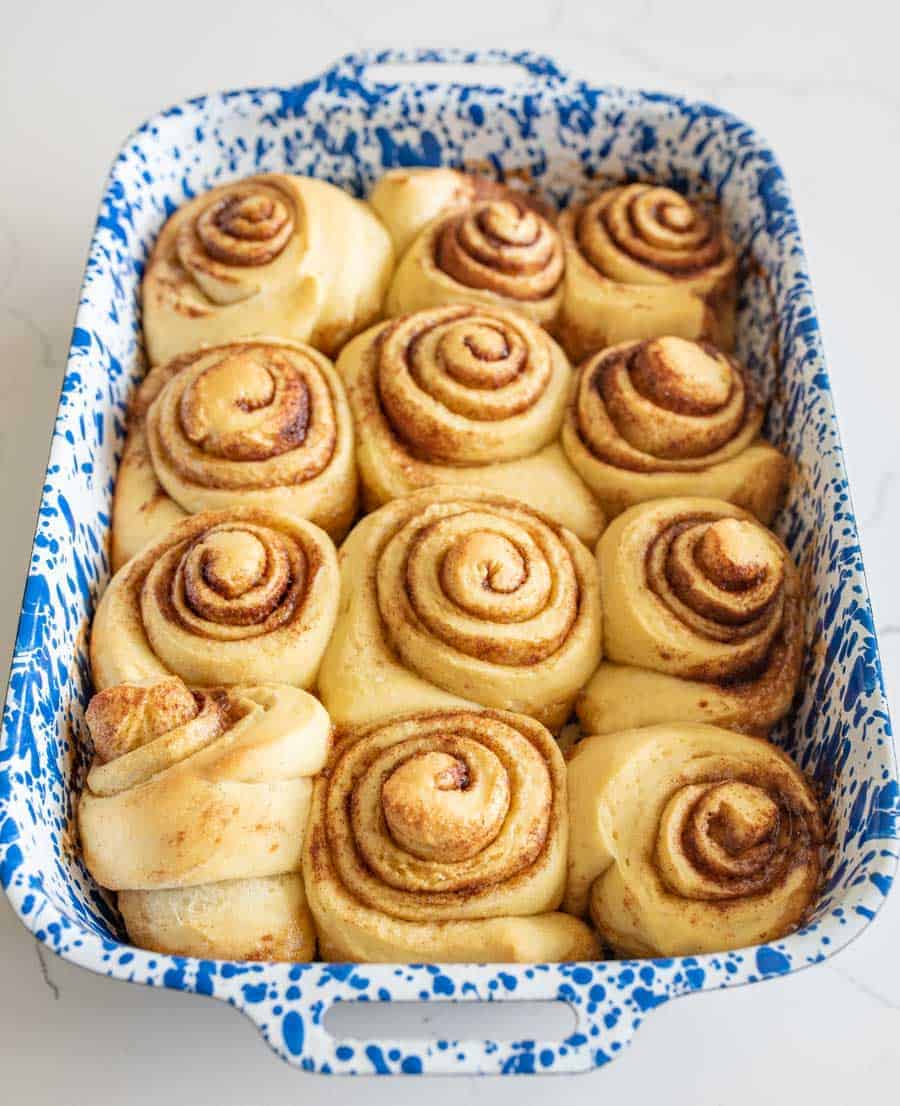
Room temperature will change how long it takes for your bread and starter to rise after being made or after a feeding. A cool house will take longer to rise, and in a warm house, your bread will rise much faster. You’ll find that it takes longer in the winter for your bread to get ready, and it’ll be faster in the summer.
That being said, you can do things to help even out the temperature. You can use warm water on cool days in your starter or in your bread, or you can wrap a warm towel around your bowl or starter jar. There are all kinds of tricks; I’d try a few if you are finding your starter or bread are being slow to rise.
No! You certainly can, but after a fair amount of testing I have found that starting my bread in a room temperature Dutch oven worked just great. It was also so much easier to not deal with a pot that was 450 degrees F. and trying to get the bread into it. That being said, if you’d like to try cooking your bread in a preheated Dutch oven, by all means, feel free. You might like the rise or crust better and it doesn’t hurt to experiment!
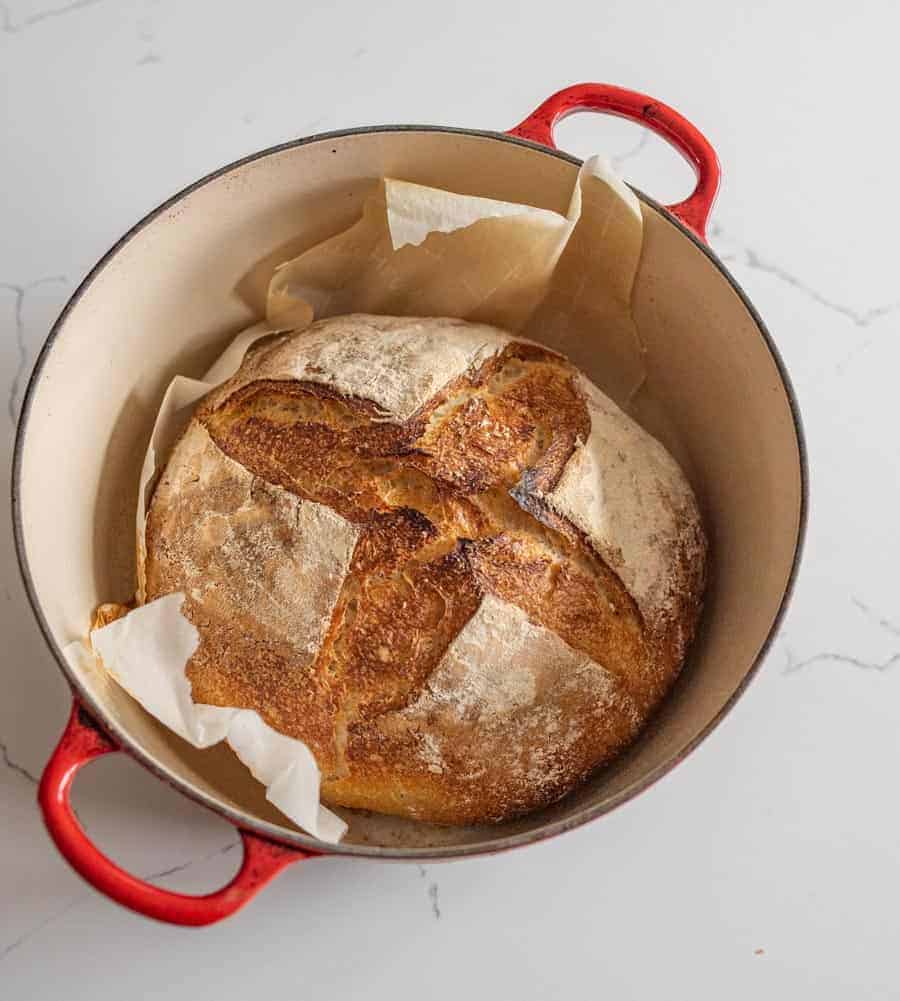
No issues! You can use a domed cooker, any large, oven-safe pot with a lid, and if you have an oven-safe pot with no lid, you can simply put a cookie sheet on it to act as a lid. I even had an internet friend place her dough on a cookie sheet and put it into the oven with a large oven safe ceramic bowl covering it.
There are lots of nontraditional ways to cook a loaf of bread! AND not all of the recipes for sourdough bread need to be cooked covered. There are many that you bake in a traditional loaf pan for a more sandwich-style bread loaf.
Ovens and pots vary, so it could have been a few things. Feel free to reduce the cooking time by 10 minutes, OR you can reduce the cooking time by 25 degrees F., no issues there. You can also set your Dutch oven on top of a cookie sheet while baking so that there is an added layer of insulation there.
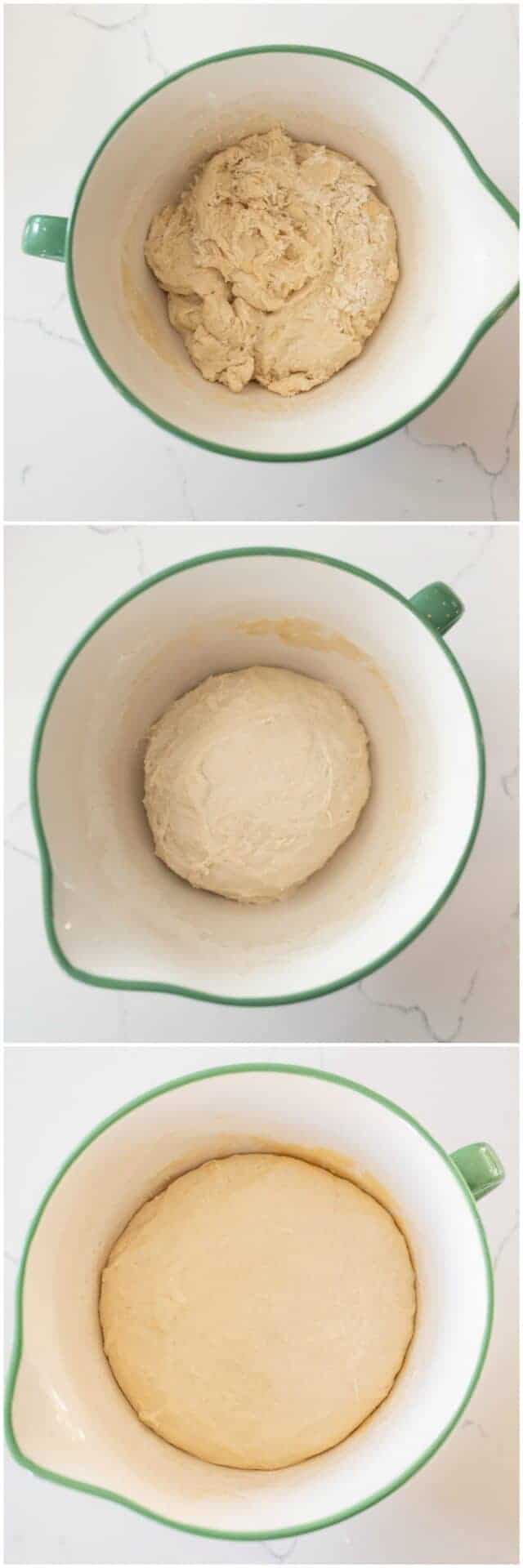
This is the most common issue I have seen when it comes to baking sourdough bread with all-purpose flour. Folks had issues with dough that is very wet, sticky, and will not hold its shape when worked with or while baking. It just turns into a blob of dough when they handle it and spreads as soon as it’s turned out of a container.
It also generally spreads when baking and doesn’t puff up nicely while baking. I am finding that there is more variation in the amount of protein and gluten in all-purpose flour than I thought would be the case. I’d recommend getting Bob’s Red Mill or King Arthur Flour all-purpose flour, organic if you can.
I have tested all my recipes using those two flours. If you find you are having this issue, please reduce the water by 50 grams and/or increase the flour by 50 to 100 grams when you are mixing up your dough the first time. It’s much easier to make these changes in the beginning instead of trying to add flour at the end. Please see the pictures for a reference as to an appropriate texture for your bread. It’s better if it’s a little more on the thick-side the first mixing than wet.
More Sourdough Recipes to Consider:
French Toast Recipes
Sourdough French Toast Casserole
French Toast Recipes
Sourdough French Toast in 15 Minutes
Sourdough Recipes
How to Rehydrate Sourdough Starter
Sourdough Recipes
How to Dehydrate Sourdough Starter
Did you make this recipe? Leave a ⭐️ review and share it on Instagram, Facebook, or Pinterest!

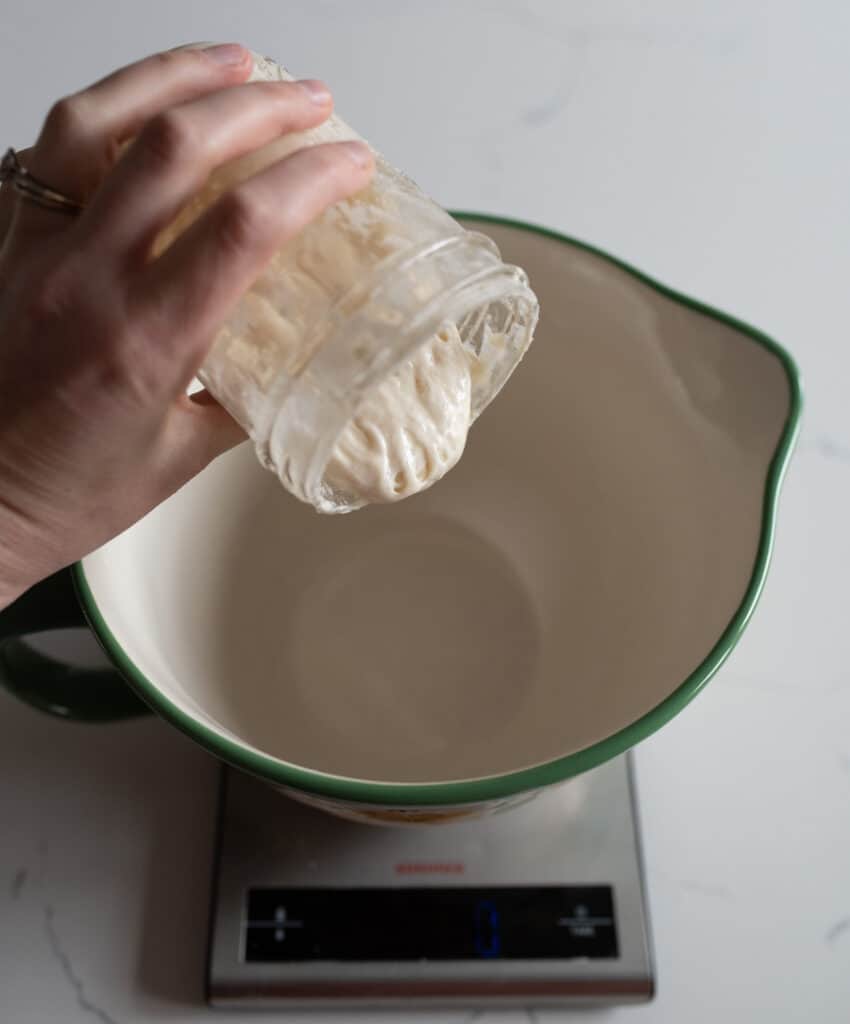
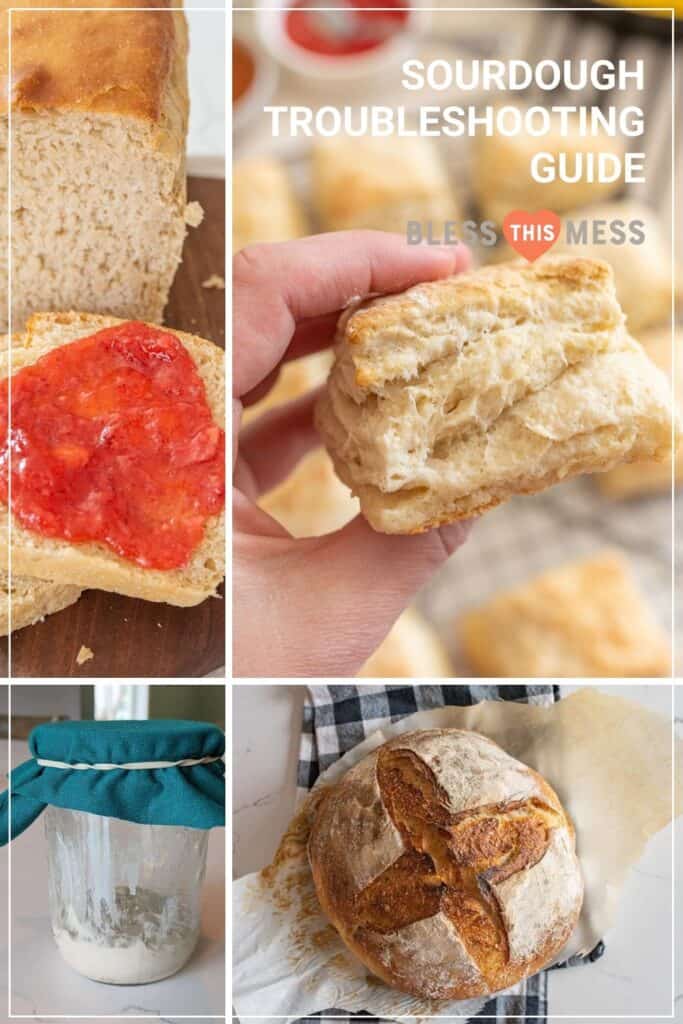

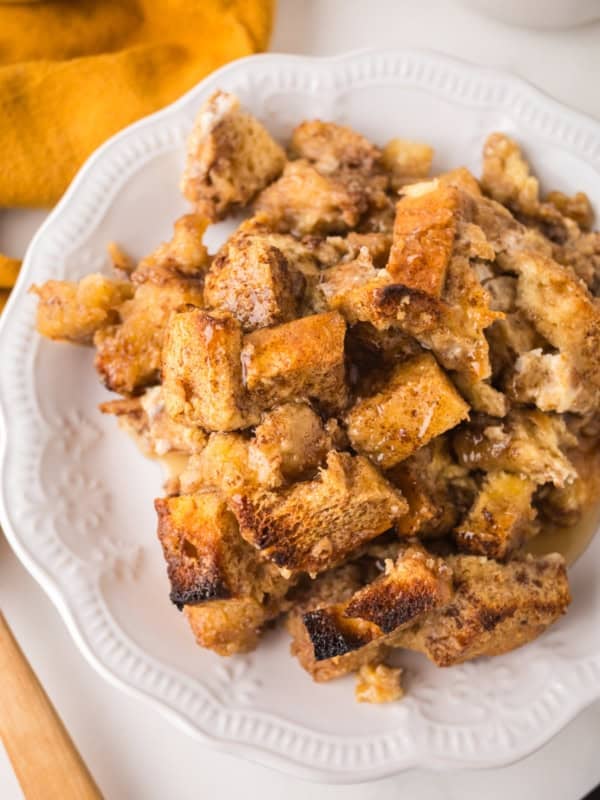
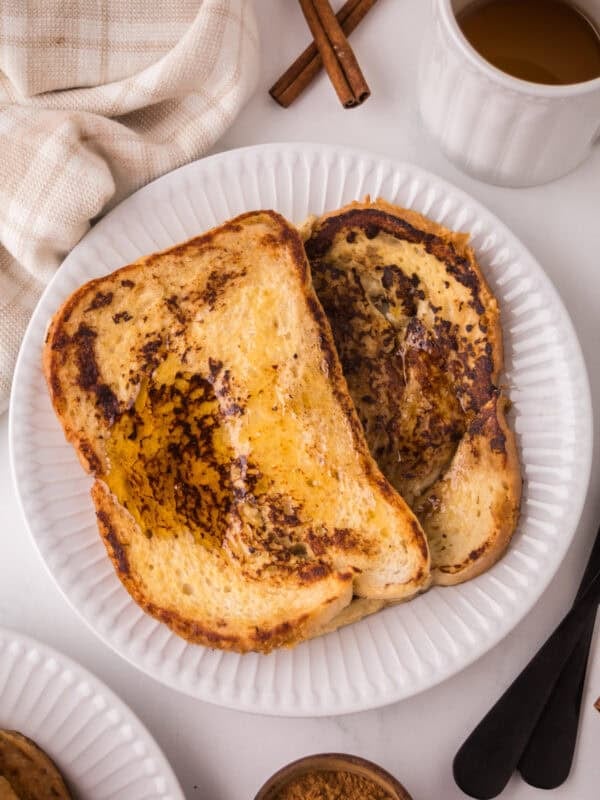
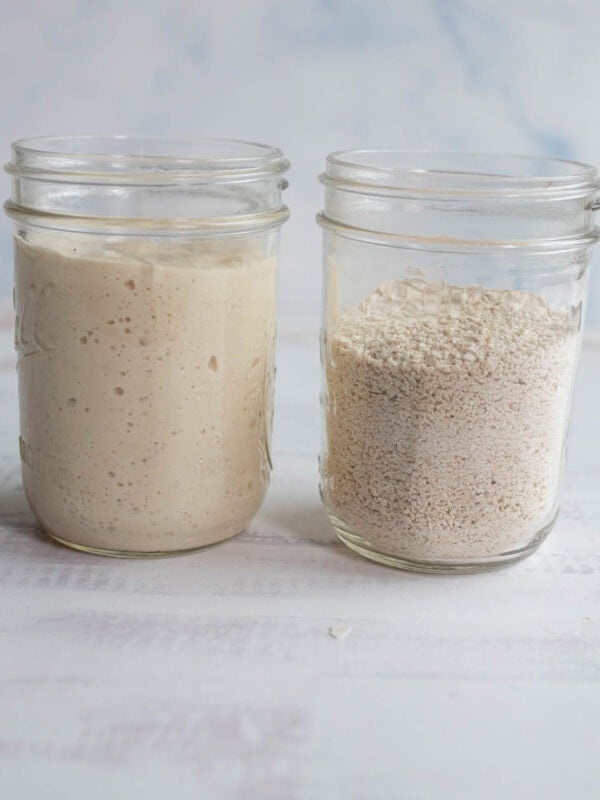
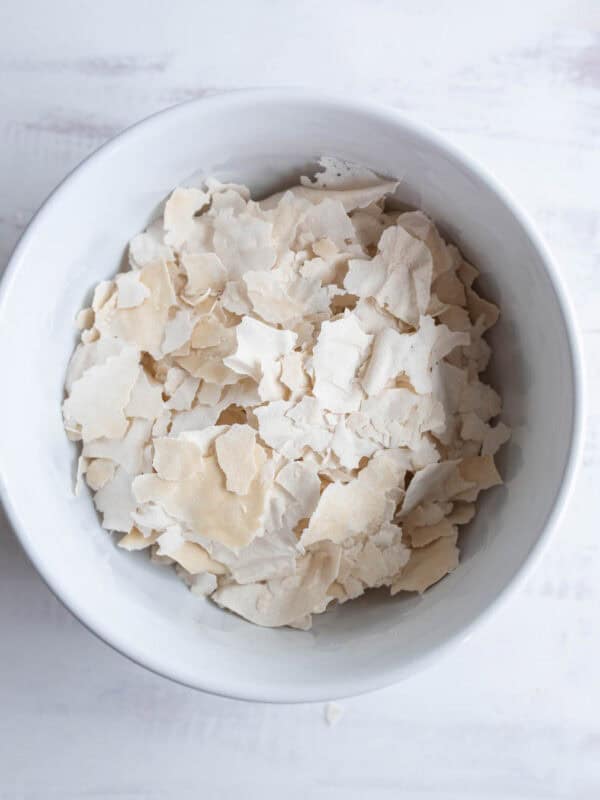






Hi! I have made the sourdough bread several times and love it! If I want to freeze the bread before it is cooked can that be done? Or will it ruin it? I did see your tips on freezing the bread after it is cooked but not one with the dough.
Jessica
I haven’t tried freezing the dough! If you try will you let us know how it turns out?